This article was first published in February 2022 and is part of Oliver Wyman's "Reset4Value series," a collection of content to help business leaders transform cost and ignite growth. Our previous installment, Re-envision Client Value, can be found here.
 Transformation is all about people — your clients, employees, and culture
Transformation is all about people — your clients, employees, and culture
Reset4Value begins here
Capabilities are the building blocks of firms, the foundation of value that businesses provide to their clients or customers. However, financial services leaders are often tempted to overinvest in their highest revenue generating capabilities — even if those areas do not truly differentiate the company. Here, we share how leaders can leverage their firm’s “culture strengths,” enhance the capabilities that matter most, and unlock scarce investment dollars to fund them appropriately.
This paper is part of our Reset4Value series, our approach to help leaders find sustainable ways to transform cost and ignite growth. Our previous insights focused on what customers value most. With this third edition, we continue to expand on value creation, and turn the next set of gears in your transformation journey — optimizing the right capabilities.
By leveraging Reset4Value, firms can identify core capabilities that have financial benefits in the near term, and deliver a sustainable transformation to increase growth ambitions and drive new value creation. Below is an except of the report, for the full version, please click here.
Four acts of unconventional leadership
Using our Reset4Value approach, leaders can pick their spots for quick wins, reallocate resources to the highest priority areas, and accelerate self-funding to monetize new capabilities.

Illustrative case study
Driving sustainable growth
Click through the illustrative example below, which showcases how a firm used Reset4Value to achieve their next wave of sustainable growth.
Background/Challenge: One of the largest providers of insurance, lending, and marketing products to financial institutions had a desire to create a foundation for the next wave of anticipated growth, but the organization faced some inhibiting challenges around the cost structure including expense growth outpacing revenues, high cost-to-serve, and competitive performance gaps.
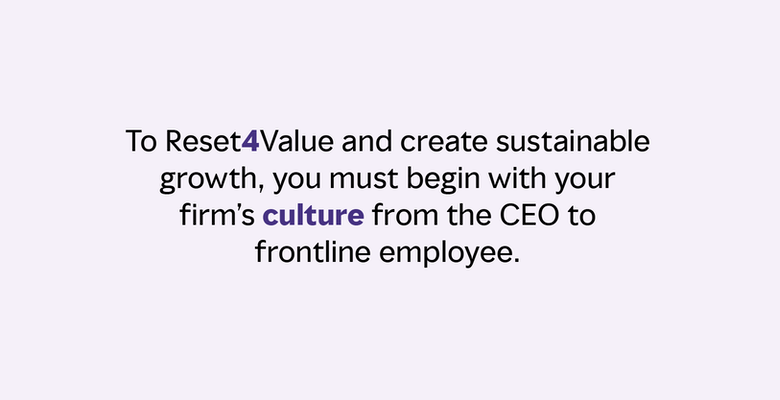
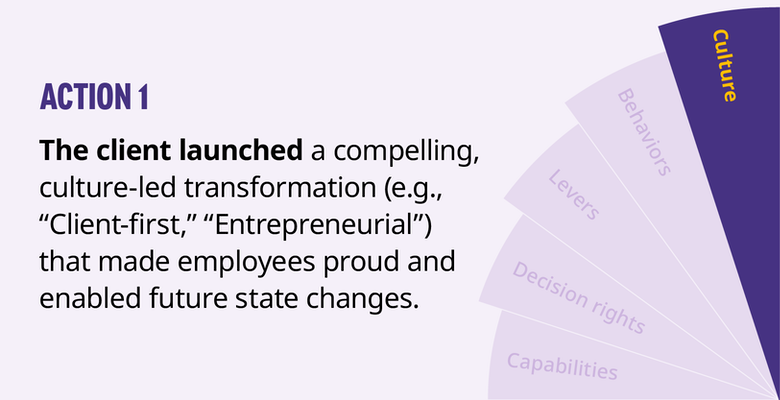
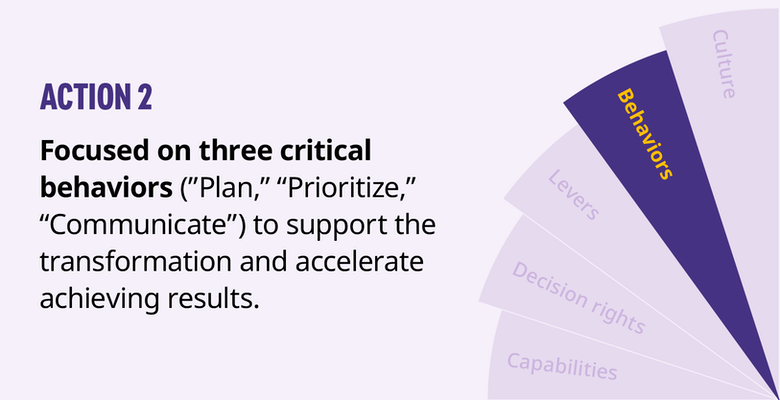
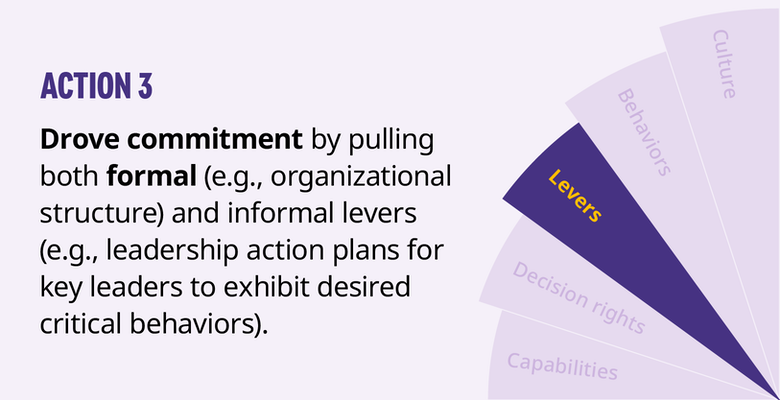
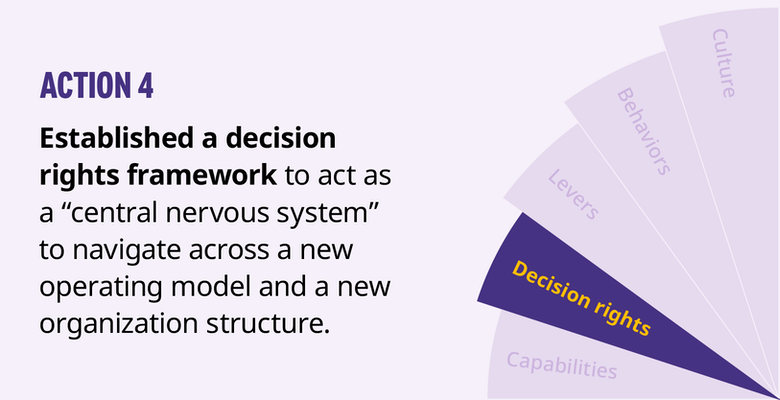

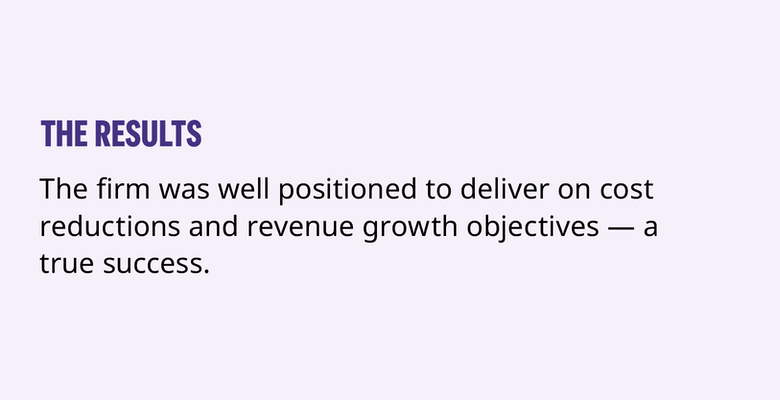
Capabilities that deliver value
What truly differentiates your firm
Firms need to think in terms of capabilities. Yes, companies can simply take cost cutting measures; however, when leaders directly connect capabilities to value this allows firms to invest in what matters most and ultimately drive growth.
A capability answers the questions: “What does my business do best to deliver client value?” and “Are our products and services addressing the most urgent needs of my clients?” Once leaders have identified the most important customer purchasing criteria, the next step is to segment capabilities based on value creation.
Investing in just a few differentiating capabilities requires conviction and discipline. This requires an honest inventory of what the firm is great at (rather than what the firm aspires to be great at) that is part of the firm’s unique DNA. Most organizations can’t simply buy or hire these core capabilities. For example, a leading online retailer has been very successful and has sustained a competitive advantage by committing to a few core capabilities. These core capabilities continue to reinforce or strengthen one another across a diversified set of shopping, entertainment, hardware, and software markets. And these capabilities are also monetized at scale to provide additional revenue streams for businesses.
 In our experience, every firm has core traits that define their culture — they need to embrace these behaviors to change how work gets done.
In our experience, every firm has core traits that define their culture — they need to embrace these behaviors to change how work gets done.
Culture is how the work gets done
Many transformations take on a business-led view. However, culture-led transformations are much more sustainable and are driven by evolving an organization’s behaviors. Leaders can spend resources on the most innovative, expensive technology, but if they do not retool their workforce or change how the work is performed, they will be challenged to sustain the returns originally envisioned.
We like to think of firm culture as a self-sustaining pattern of behavior that determines: “How the work is performed within the firm.” This is built on core traits such as consensus-based decision making, loyalty, and adopting a CustomerFirst mindset. A firm’s core traits are specific to their organization and their differentiation. The positive effects as well as the negatives or challenges to mitigate may depend on the firm’s unique culture and common behaviors. For example, with consensus-based decision making, decisions may be thoroughly vetted and include different points of view, however this can also slow down decision making or diffuse accountability.
Put firm culture to work
To successfully transform, organizations should review their existing established traits and define a set of behaviors to enhance the positives and mitigate the negatives — putting their culture to work and enhancing the value they provide to clients. The first step is to determine what truly differentiates your firm.
Power your business for sustainable growth
Link your cost, growth, and investment agendas
The third act of our Reset4Value approach links a firm’s cost, growth and investment agendas. Most cost-cutting efforts fall into the trap of labelling costs as ‘bad’ and decoupling capabilities from growth; for example, companies starve their key capabilities, while overinvesting in others. We believe leaders need to have a clear understanding of their differentiated capabilities, and use a surgical approach to trim non-differentiating capabilities. This will allow leaders to sustain today’s performance margins while proactively managing reinvestment to enable growth.
Get started
Performing the “Four Acts of Unconventional Leadership” in a cohesive, self-reinforcing whole drives the organization to Reset4Value. This is key to fusing your cost transformation efforts together. Many times, leaders may re-envision customer value and segment their costs, but do not take further steps to link their cost, growth and investment agendas or ultimately change the organization’s behaviors. Our upcoming paper will take a deep dive into the final act and key ingredient to a successful cost transformation — business culture and organizational behaviors. Engaging the team within your organization to adopt new behaviors and work toward a collective vision is a critical piece for any firm’s success.
At Oliver Wyman, we have worked with multiple CEOs and their leadership teams to make the right types of decisions and poise their business for accelerated growth. Our Reset4Value playbook offers a fast, structured approach to bring large opportunities into plain sight and allow a true view of your firm’s differentiation. The time to get started is now.


